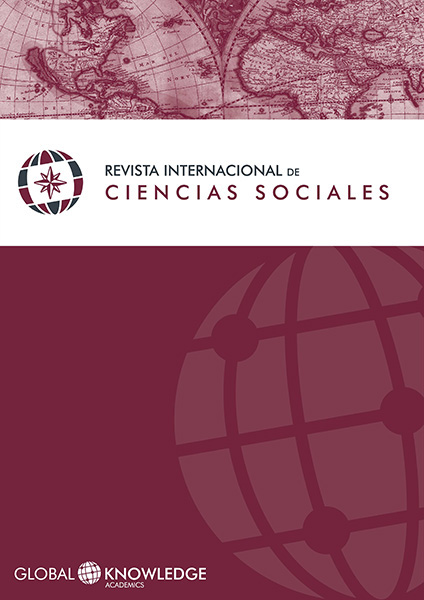From the Origin of Dietetics to the Emergence of Nutrition Considerations on Scientific Contributions in the Area
DOI:
https://doi.org/10.37467/gka-revsocial.v1.1217Keywords:
Diet, Nutrition, Science, Scientific ContributionAbstract
Nutrition and dietetics throughout history have been viewed from two fundamental aspects: as a means to restore health and as a means to prevent the disease. Since its inception the appearance of dietetics, the search was based on maintaining the balance of health and disease. Later, with the rise of the scientific revolution, as is nutrition science who focuses on the study of the different processes through which the body uses nutrients ingested. In the historical development of scientific knowledge both concepts, provided the key tools for the study of this discipline. All these important contributions, provided the fundamental basis for the development of nutrition as a scientific discipline XXI century, currently devoted to the study of many problems associated with food and modern lifestyles. Nutrition therefore rests on the discipline of scientific knowledge, is the fundamental basis for the understanding of the causes of the problems and possible solutions to search for them.
Downloads
Global Statistics ℹ️
|
1677
Views
|
14701
Downloads
|
|
16378
Total
|
|
References
Arroyo P, Mandujano M, Cravioto A. (2001).contribución del Doctor Joaquín Cravioto a la ciencia y la salud. Fundación mexicana para la salud. México.
Braier L. (1987). Fisiopatología y clínica de la nutrición. (1era Edición). Argentina. Editorial Panamericana.
Bengoa Lecanda, J. (2003). Historia de la nutrición en salud pública. Anales Venezolanos de Nutrición, 16(2).
Bengoa Lecanda, J. (2000). Joaquín Cravioto y su mundo internacional. Anales Venezolanos de Nutrición, 13(1).
Benavides Huerto M. (2003). Sólo para quien se interesa por la filosofía del cuidado. El cuerpo integral visto por los griegos. Revista Mexicana de Enfermería Cardiológica, 11(2): 85-89.
Bender A. (1973). Nutrición y Alimentos Dietéticos. (2da Edición). Madrid. Editorial Acribia.
Bertomeu J, Belmar A. (2006). La Revolución Química. Entre la historia y la memoria. Universidad de Valencia. España.
Bernabeu-Maestre y Espluges Pellicer.(2008).Historia de la alimentación y nutrición. En Investigación e innovación tecnológica en la ciencia de la nutrición. (1era Edición).España: Club Universitario. p 7-53.
Cameron Gruner. (1970). A Treatise on The Canon of Medicine of Avicenna, incorporating a translation of the first book”. New York: Augustus M. Kelley Publishers.
Couceiro M. (1995). La alimentación como un tiempo de la nutrición, su disponibilidad y accesibilidad económica. Revista cubana Salud de Pública, 33(3): 2. [Publicación periódica en línea] Disponible en: http://scielo.sld.cu/scielo.php?script=sci_arttext&pid=S0864-34662007000300019&lng=es. [Consultada 2012 abril 18]. DOI: https://doi.org/10.1590/S0864-34662007000300019
Chávez J. (2010). Notas Necrológicas. José María Bengoa Lecanda (1913 – 2010). Archivos Latinoamericanos de Nutrición, 60(1).
Evans H, Emerson G; Mohmmed A.(1937). The chemistry of vitamin E. tocopherols from various sources. Journal Bio Chemical 1937; 122:99-107. DOI: https://doi.org/10.1016/S0021-9258(18)74252-X
Dekker M. (1999).Vitamin E In: Machalin Lj. Ed. Handbook of Vitamins. New York. p 144
Gómez Ayala A. Nutrigenómica y nutrigenética. (2007). Oficina de Farmacia, 26 (4).
Habermans J. (1986). Ciencia y Técnica como Ideología. Madrid: Tecnos, p 54-58.
Jaroszynski P. (2005).De Sofía a Filosofía .Pensamiento y cultura, 8(1), 49- 55
Jaffe, W. (1987).Nuestros alimentos ayer, hoy y mañana. Acta Científica Venezolana.
Mataix Verdú J. (1995).Nutrientes y sus funciones. En: Nutrición y Salud Púb lica. Métodos, bases científicas y publicaciones. Barcelona: Editorial Masson.
Martínez A. (1998). Fundamentos Teórico- Prácticos de Nutrición y Dietética. Madrid: Mc Graw-Hill. Interamericana. Universidad de Navarra.
Puigbo J. (2002). La Fragua de la medicina clínica y de la cardiología. Caracas: Fundación Polar. Universidad Central de Venezuela.
Sánchez Samayoa. (2004)Historia de la Nutrición. [Tesis de Maestría].Guatemala: Universidad de San Carlos.
Sanz Porras (2008). Aportaciones de la sociología al estudio de la nutrición humana: una perspectiva científica emergente en España.Nutrición Hospitalaria, 23(6):531-535.
Shils M, Olson J, Shine M, Ross C. (2002). Nutrición en Salud y enfermedad. (9º edición). Mc Graw Hill.
Toscano W. (2005).Dietética Hipocrática y actividad física: tradición y valoración actual. [Tesis Doctoral].España: Universidad de León.
Vallejos R. (2000). Aristotelismo, Medicina antigua y universidad Mexicana. Revista Biomédica, 12:138-141. DOI: https://doi.org/10.32776/revbiomed.v12i2.266
Val-Bernal F. y Garijo F. (2003).Hipócrates y su vigencia en la Anatomía Patológica actual. Revista Española de Patología, 36 (1):95-100.
Vasconcelos Guedes F. (2010).La ciencia de la nutrición en tránsito: de nutrición y dietética a la Nutrigenómica. Revista de Nutrición, 23 (6) [Publicación periódica en línea] Disponible en: http://dx.doi.org/10.1590/S1415-52732010000600001. [Consultada 2012 Noviembre 18].
Wanden- Berghe Lozano. (2008). La metodología de investigación en Nutrición :¿Hace falta algo más?. En Investigación e innovación tecnológica en la ciencia de la nutrición. (1era ed). España: Club Universitario. p 7-53.
Whitaker J, Fort E. Vimokesant S. (1967). Hematologic Response to Vitamin E in the Anemia Associated with Protein-Calorie Malnutrition. American Journal Nutrition, 20: 783-9. DOI: https://doi.org/10.1093/ajcn/20.7.783
Downloads
Published
How to Cite
Issue
Section
License
Those authors who publish in this journal accept the following terms:
-
Authors retain copyright.
-
Authors transfer to the journal the right of first publication. The journal also owns the publishing rights.
-
All published contents are governed by an Attribution-NoDerivatives 4.0 International License.
Access the informative version and legal text of the license. By virtue of this, third parties are allowed to use what is published as long as they mention the authorship of the work and the first publication in this journal. If you transform the material, you may not distribute the modified work. -
Authors may make other independent and additional contractual arrangements for non-exclusive distribution of the version of the article published in this journal (e.g., inclusion in an institutional repository or publication in a book) as long as they clearly indicate that the work was first published in this journal.
- Authors are allowed and recommended to publish their work on the Internet (for example on institutional and personal websites), following the publication of, and referencing the journal, as this could lead to constructive exchanges and a more extensive and quick circulation of published works (see The Effect of Open Access).













